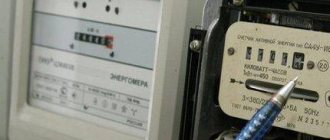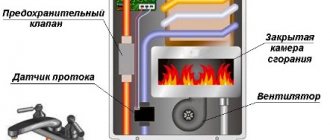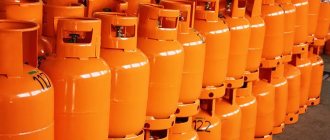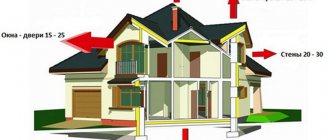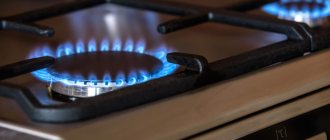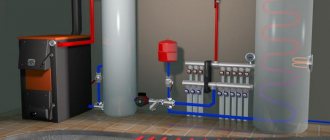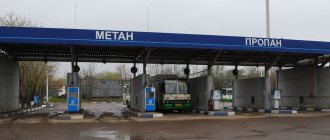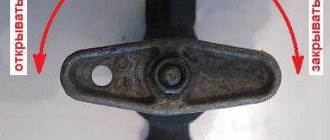Mass and volume of propane. From kilograms (kg) to liters (l)
Mass and volume of propane. From kilograms (kg) to liters (l)
Good afternoon dear friends. Owners of gas tanks are often faced with the need to measure propane in kg (kilograms), when the default volume of gas tanks and propane storage tanks is indicated in liters (l). There is also a need for a reverse conversion - from liters to kg.
The mathematics of converting the mass (kg) and volume (liters or m3) of gas is quite simple.
We have written many articles on this topic. Such as:
Since you are interested in this issue, you may also be interested in these articles:
Since there are a lot of people who ask this question in this form. We decided to write an answer for them too)))
Let's get started
From the school physics course, we know the formula for the relationship between the mass and volume of a substance through the third quantity - density. Mass = density * volume, or
m = p * V, where:
- m is the mass of the substance (in the SI system, familiar to us from the physics classroom, measured in kg),
- V is its volume (in the SI system it is measured in m3, but in the case of the volumes of gas tanks and gas cylinders, liters will be closer to us),
- p – density (kg/liter).
The difficulty of the calculation lies in the fact that the density of propane and propane-butane mixture is not constant and depends on the ambient temperature. That is, propane weighing 1 kg will have a different volume at different temperatures (and occupy a different number of liters or m3).
Below is a table of the density (mass to volume ratio) of a propane-butane mixture depending on the air temperature (measured in °C) and the percentage of the pair of two gases in the resulting liquefied mixture.
The top line shows the ambient temperature (in °C), the left column shows the percentage ratio of propane-butane (that is, “90/10” means that the mixture contains 90% propane and 10% butane). At the intersection of the ratio and temperature values is the density of the mixture.
Density table for propane - butane mixture.
That is, at a temperature of 10 °C and a gas ratio of 50/50, we have a mixture density of 0.549. And at a temperature of -15
°C and a gas ratio of 80/20, we have a mixture density of 0.561.
If we know the density of the mixture and one of the “mass-volume” parameters, then using the above formula m = p * V we can calculate the missing value.
For example, having a density of the gas mixture equal to 0.554, and knowing that the useful volume of the gas cylinder is 40 liters (any container containing liquefied gas cannot be filled more than 85% precisely due to changes in density and changes in the volume occupied by the mixture) , we can calculate the mass.
m = p * V = 0.554 * 40 = 22.16 kg.
We cannot help but remind you that the cylinder should be filled to no more than 85% of its total volume: 5l - 4.25l; 12l - 10.2l; 27l - 22.95l; 50l - 42.5l
Real gas consumption: reviews from gas tank owners
We have selected examples of using autonomous heating on the ForumHouse forum. Owners have different experiences. In the project, the insulation of the house, the climate, the needs of the residents and the quality of the boiler are important.
Case 1. The user actively spends LPG - permanent residence with regular showers. A 2,300 liter refill lasts for almost 2 years at a room temperature of at least 21°C. Costs are reduced by using the fireplace 6 times a month - 3 hours of burning and 9 hours of smoldering.
Consumption per year: 20,700 rubles (1150 l at 18 rubles/l). House 125 m2.
Case 2. The user has well insulated the house and installed a low-temperature boiler. In winter I did not take away the hot water supply. Daytime temperature in the rooms is 23°C, night temperature is 20°C. Daily gas consumption is from 6 to 12 liters.
Consumption per year: 15,000 rubles (1000 l at 15 rubles/l). House 120 m2.
Case 3. The user heats the house and garage. There are problems with insulation: heat loss through the door, floor and ceiling. Gas consumption is about 15 liters per day. Daytime temperature in the rooms is 22°C, night temperature is 19°C.
Consumption per year: 81,000 rubles (5,475 liters at 15 rubles/l). House and garage 165 m2.
Case 4. The user lives at his dacha on weekends. Only the first floor of the two is heated. On weekdays, if there are no residents, the temperature is automatically maintained at 7°C. The hot water supply has not yet been started. Uses remote heating control via a ZONT room thermostat with its own SIM card.
Consumption per year: 33,900 rubles (2,275 liters for 14.90 rubles/l). House 190 m2.
How much does a bucket of tomatoes weigh?
How many cubic meters of gas are in a 50 liter propane cylinder?
The weight of a bucket of tomatoes largely depends on the variety, that is, the size of the tomatoes, their shape and their density. After all, there are denser and heavier tomatoes, and there are soft and lighter ones. But on average, a bucket of tomatoes pulls 9 kilograms.
A 10 liter bucket of tomatoes weighs 9 - 10 kg.
If there are fewer voids between the tomatoes, then the tomato can yield all of ten kilograms, if there are more, then eight. If you look at the reference tables, they show the volumetric density of tomatoes, that is, the density taking into account the air space between them, and indicate that exactly 10 kilograms of tomatoes fit in a ten-liter bucket. In practice, they fit a little less.
Costs of heating a house with coal.
The heat of combustion of hard coal is approximately 35,000 kJ/kg (for brown coal this figure is slightly less, for anthracite a little more). The average price of 1 kg of coal is approximately 9 rubles. 50 kopecks (or 9500 per ton) (this is the price for March 2012 in Moscow). Boiler efficiency is approximately 90%. Thus, the amount of heat released by 1 kg of coal will be:
35000/10*2.78 = 9730 W or 9.73 kW
The cost of 1 kW of heat, taking into account the boiler efficiency, will be:
The total cost of heating a house with coal for the heating season will be:
18000*1.08 = 19440 rubles.
The approximate consumption of coal for heating will be about 2 tons.
Varieties of sand
How much horsepower does a KamAZ 5320 have? How much does a KamAZ weigh?
Experts in this field count several dozen varieties, but in everyday use the generalized concept of “construction sand” most often applies. For these purposes, the following types of this material are used:
- River sand
. Contrary to popular myth, it is taken not from the shore, but from the very bottom of the river bed. This material is extracted by dredging and then either thrown ashore by an earthen shell or stored on barges. Next, it is dried, after which it is used for its intended purpose. This is pure sand, but does not require pre-treatment. The quality is not inferior to the next variety, but costs several times less. - Alluvial sand
. It is formed as a result of artificial washing of quarry sand with a large amount of water under pressure on sieves. - Silicate sand
. It has a dazzling white color. It can be used as a cheap drainage layer, but there is a limitation in its use - it can lime the soil, making it impossible for trees to grow on the site. - Quarry sand
. It is mined in specialized quarries using excavators and does not undergo any additional processing. - Sea sand
. It is completely unsuitable for concrete mixtures for two simple reasons. The first is that it is salted, and to wash off all the salt, you will need to spend too much water. The second is that it is ground by the surf until the grains of sand are rounded, which then negatively affects the overall strength of the concrete.
Calculation example
How much does a kilogram of diesel fuel weigh?
It is necessary to determine how many cubic meters of gas one cylinder with a 50-liter propane-butane mixture contains if you pass its contents through a gas meter:
- the mass of the gas mixture pumped into it is about 21 kilograms;
- volume in m³ is equal to 50/5 = 10;
- after adjusting for the filling of the cylinder, we get 10 × 0.85 = 8.5 m³.
This indicator may vary depending on the ambient temperature, since when it decreases, the pressure inside the container decreases, with a corresponding decrease in the volume of fuel.
But the use of liters of gas in cubic meters is only relevant as an approximate calculation. When purchasing this type of fuel, kilograms of the gas mixture and the pressure inside the container are important, and when using individual metering devices, a standard unit of measurement is used - cubic meters, the conversion procedure of which does not depend on the composition of the gas and is determined by a simple arithmetic calculation in the ratio of 1 to 1000.
How to convert cubes to liters? You will find out the answer to this question by reading this article.
- How many liters are in 1 cubic liter?
- Formula for converting the volume of a cube into liters
- Formula for converting liters to cubic meters
- Examples of converting liters to cubes
- Examples of converting cubes to liters
How to convert cubes to liters?
Students often have difficulty converting one unit of measurement to another. Hence a lot of questions like:
- How many liters are in a cube?
- 1 cubic meter - how many liters is it?
- How many liters are in a cube of water?
- How many liters of gas, propane, gasoline, sand, earth, expanded clay are in a cube?
- How many liters of methane, liquefied gas are in a cube?
- How to convert cm cubed (cm 3) or dm cube (cm 3) to liters?
- A cube of concrete, gasoline, diesel fuel, diesel fuel - how many liters is that?
Heating costs with diesel fuel.
The average wholesale price of diesel fuel in the Moscow region is 25 rubles 50 kopecks per liter. This price is at the end of March 2012, subject to ordering 2000 liters with delivery. The specific heat of combustion of diesel fuel is 42,700 kJ/kg or approximately 36,295 kJ/liter (based on the density of diesel fuel 0.85 kg/liter). The efficiency of a diesel boiler is approximately 90%. Thus, the amount of heat released by one liter of diesel fuel will be:
36295/10*2.78 = 10090 W or 10.09 kW.
The cost of 1 kW of heat, taking into account the boiler efficiency, will be:
25.5/10.09/0.9 = 2 rub. 80kop.
The total cost of heating our house with diesel fuel will be:
18000*2.8 = 50400 rubles
The approximate consumption of diesel fuel during the heating period will be slightly less than 2000 liters.
As it turns out, heating with diesel fuel is the most expensive heating method. Oddly enough, people have a completely different opinion.
How many kilograms of gas are in a 50-liter cylinder?
- According to the norms, a gas cylinder is filled with 30 kilograms of gas, but if you really ask (although they are unlikely to agree to it), they can fill more: 35-40 kilograms, but the responsibility in the event of an emergency will be yours alone.
- The weight of the gas cylinder along with the gas will depend on what kind of gas is pumped into it. If you take a regular 50-kilogram cylinder with propane gas, then its weight will be about 43-45 kg, of which 22.5 kg will weigh the cylinder itself, and the gas can be pumped from 20 to 22 kg, more is simply dangerous for safety reasons.
- If a 50-liter cylinder was filled with propane, then in kilograms it will be exactly 21, if in liters, then the volume is 40 liters. According to other data, a 50-liter cylinder holds 42 liters of propane-butane mixture and exactly 23 in kilograms. The volume of oxygen will be slightly different .
- I don’t know where they fill gas cylinders more than required according to the standard, at our gas stations, and I often fill cylinders for the dacha, even video surveillance has been installed for the gas refuelers, so that God forbid, they don’t pump more. Because there have been cases of explosions, even with fatalities, and now such refueling threatens serious trouble for the owners. They began to demand not only the presence of a plug, but even rubber rings around the body of the cylinder. Now to the essence of the issue. an empty 50-liter propane tank weighs 22.5 kilograms. They fill it with 21.2 kilograms of gas - this is the maximum. The total weight of the full cylinder is 43.7 kilograms.
- I have the following data: a 50-kilogram cylinder contains approximately 20 kg of propane. Well, give or take the uneven filling. But a 27-kilogram cylinder holds 11 kilograms of propane. or are you talking about another gas?
- I thought about this question myself, because I myself want to buy a gas cylinder for my summer house and a gas stove to save on electricity. An empty 50-liter gas cylinder weighs about 22 kilograms. The mass of the gas in nm is approximately the same as the weight of the cylinder itself. That is, one liter of gas weighs a little less than half a kilogram.
- Not so much. A little more than twenty kilograms according to the standards, this is how it should be filled. Considering that the empty cylinder itself weighs 22 kilograms, it turns out that a cylinder filled with gas will weigh around 43-44 kilograms.
Read also: The best material for a knife
Calculation example
Calculator for converting liters of liquefied gas to kilograms (kg)
To understand how many liters are 1 cubic meter of water and learn how to calculate meter readings, just look at a practical example:
At the end of September, the meter showed 00021889, a month later - 00045346. The first numbers after the zeros are cubic meters, they are subject to rounding. It turns out 45 and 22 respectively.
45 – 22 = 23 cubes used.
The receipts show the cost of 1 cubic meter. water. It must be multiplied by the result obtained. For example, at a price of 35 rubles. the result is as follows:
23 x 35 = 805 rub.
According to this scheme, the “cubes” of both hot and cold water supply are calculated.
striker_truda
Notes of a Traveling Locksmith – Malaga Truth
How much gas is in the cylinder
Oxygen, argon, helium, welding mixtures: 40 liter cylinder at 150 atm - 6 cubic mAcetylene: 40 liter cylinder at 19 atm - 4.5 cubic mCarbon dioxide: 40 liter cylinder - 24 kg - 12 cubic mPropane: 50 liter cylinder – 42 liters of liquid gas – 21 kg – 10 cubic meters.
Oxygen pressure in the cylinder depending on temperature
-40С – 105 atm-20С – 120 atm0С – 135 atm+20С – 150 atm (nominal)+40С – 165 atm
Welding wire Sv-08 and its derivatives, weight 1 kilometer along the length
0.6 – 2.222 kg0.8 – 3.950 kg1.0 – 6.173 kg1.2 – 8.888 kg
Calorific value (calorific value) of liquefied and natural gas
Natural gas – 8500 kcal/m3 Liquefied gas – 21800 kcal/m3
Examples of using the above data
Question: How long will gas and wire last when welding semi-automatically with a cassette of 0.8 mm wire weighing 5 kg and a cylinder of carbon dioxide with a volume of 10 liters? Answer: Welding wire SV-08 with a diameter of 0.8 mm weighs 3.950 kg 1 kilometer, which means on the cassette 5 kg approximately 1200 meters of wire. If the average feed speed for such wire is 4 meters per minute, then the cassette will go in 300 minutes. Carbon dioxide in a “large” 40-liter cylinder is 12 cubic meters or 12,000 liters; if you convert it to a “small” 10-liter cylinder, then it will contain 3 cubic meters of carbon dioxide. meters or 3000 liters. If the gas consumption for purging is 10 liters per minute, then a 10-liter cylinder should be enough for 300 minutes or for 1 cassette of 0.8 wire weighing 5 kg, or a “large” cylinder of 40 liters for 4 cassettes of 5 kg each.
Question: I want to install a gas boiler at my dacha and use cylinders for heating, how long will one cylinder last? Answer: A 50-liter “large” propane cylinder contains 21 kg of liquefied gas or 10 cubic meters of gas in gaseous form. We find the boiler data, for example, take the very common AOGV-11.6 boiler with a power of 11.6 kW and designed for heating 110 square meters. meters. The ZhMZ website indicates the consumption in kilograms per hour for liquefied gas - 0.86 kg per hour when operating at full capacity. We divide 21 kg of gas in a cylinder by 0.86 kg/hour = 18 hours of continuous burning of such a boiler on 1 cylinder. In reality, this will happen if it is -30C outside with a standard house and the usual requirements for the air temperature in it, and if outside If it is only -20C, then 1 cylinder will last for 24 hours (day). We can conclude that in order to heat an ordinary house of 110 square meters. meters of bottled gas in the cold months of the year you need about 30 cylinders per month. It must be remembered that due to the different calorific value of liquefied and natural gas, the consumption of liquefied and natural gas at the same power for boilers is different. To switch from one type of gas to another, boilers usually need to change jets/nozzles. When making calculations, be sure to take this into account and take the flow data specifically for a boiler with jets for the correct gas.
Starting investments
The initial investment in an autonomous gasification system can be easily calculated based on the proposals of various companies. For example, installing an underground gas tank with a volume of 6.5 m3 on a turnkey basis in one day with all the necessary equipment will now cost from 400 to 500 thousand rubles. Such a gas holder is capable of supplying gas to an average house or cottage with a plot and household plot throughout the year, including gas consumption for heating and hot water supply.
With connection to the gas main, if gasification of houses or objects is not provided for in the master plan, everything is not so simple and unambiguous, and the proximity of the gas pipeline does not at all guarantee an easy solution to this problem. Firstly, connection may simply be impossible, since the capacity of gas pipelines is limited, and additional capacity may not be available.
What is the weight of a cubic meter of water
The weight of 1 liter is usually taken as 1 kilogram, therefore, 1 cubic meter of water fits in one ton. But this is not entirely true. In fact, weight is influenced by many factors: pressure, temperature, the state of aggregation in which it is located. Therefore, a ton of water does not always contain 1000 kilograms.
| Weight measure | Liquid state | Solid state (ice from distilled liquid) | Solid state (pure snow) |
| Glass (250 ml), g | 249,6 | 229 | 12,5-112,5 |
| 1 liter, g | 298,2 | 917 | 50-450 |
| Twelve liter bucket, kg | 11,98 | 11 | 5-15 |
| Cubometer, kg | 998,2 | 917 | 100-450 |
The weight of snow directly depends on its density, which is influenced by the area in which the precipitation occurred and the time that has passed since the snowfall. The density of newly fallen snow is 0.05 gp/cm3 and compacted snow is 0.45 gp/cm3.
Even the force of gravity in different parts of the Earth and on different planets affects the weight of a liquid. For example, on Mars, a liter of water weighs 377 grams, therefore, 1 cubic meter is equal to 377 kg.
But let's not fly far and return to our earthly reality. As for the states of aggregation, in each of them it will have a different weight.
Bulk density of cement
How much does a liter of gasoline weigh?
Density is the mass of a substance divided by the volume it occupies. There are true and bulk densities for bulk materials with a fine fraction, which include cement. This material is a powdery, loose mixture of small particles obtained by grinding gypsum and clinker (limestone and baked clay). There is no tight connection between the particles, so the gaps are filled with air.
Depending on storage and transportation conditions, the density can range from 1100 kg/m3 (“fresh” product - after production) to 3200 kg/m3 (fully “set”). True density tends to its maximum value when the binder turns into a monolith.
Portland cement: what is it?
For construction calculations, bulk density is taken. To calculate how much cement will fit in a 10 or 12 liter container, you need to multiply the bulk density value by the volume in cubic meters. Recall that a liter is also a unit of volume:
- One liter is 1 cubic decimeter (1 dm3 = 1000 cm3).
- One cubic meter is equal to 1000 dm3.
Then, if instead of kilograms we substitute mass in grams, and instead of cubic meters - dm3, we get the density in grams per liter. For example:
1300 kg/m3 = 1300000 g/1000 dm3 = 1300 g/dm3 = 1.3 kg/liter.
This means that in a ten-liter bucket there will be 13 kg, and in a 12-liter bucket - 1300 g x 12 l = 15600 g = 15.6 kg.
The bulk density depends on:
- Production technologies, during which the main dimensions and shape of microparticles are obtained, and air gaps are formed;
- The composition of the mixture - additives in the form of microsilica, limestone, slag and hydrophobic additives “work” to reduce density;
- Storage time - immediately after production, “in the heat, in the heat,” the cement particles are electrified (have a static charge), and repelling each other, form maximum voids. As a result, the output has a minimum density of 1100 kg/m3. After the stages of loading, transportation, and storage, “discharge” and “shrinkage-shrinkage” occur, which leads to compaction.
The most popular brands of cement available for sale from cement factories are M400 and M500. These numbers demonstrate only the strength properties of the binders. More information is contained in modern labeling according to GOST 31108-2016. Often, both designations are presented on the packaging.
In the photo with Portland cement M400 in the lower part, the modern marking is “deciphered” as follows:
- Cem II /A - Portland cement with minimal additives from 6 to 20% (letter A);
- Ш - slag (type of additive);
- 32.5 - compressive strength in megapascals (M400 - in kgf/cm2);
- B - fast-hardening (rate of strength gain).
Propane butane gas how to convert cubic meters to liters
When performing construction work, for example, when laying or repairing certain types of roofing, liquefied gas is used. When estimate documentation is drawn up for work related to the use of gas, estimators are sometimes faced with a problem: how to convert cubic meters into liters. The fact is that liquefied gas is most often supplied in cylinders, the volume of which is measured in liters. In estimate documentation, calculations most often use the international system of SI units, in which a cubic meter is taken as a unit of volume. To calculate the number of gas cylinders and determine their cost, you must convert m3 to liters.
Density is the quantitative value of mass in kilograms placed in a cubic meter. A very ambiguous value and depends on many factors. The main one is temperature. So, the density of propane-butane can vary from 490 to 619 kg/m3.
What do you need to know?
We must immediately make a reservation that a simple calculation based on how many liters are in a cube does not work in our case. 1 m3 contains 1000 liters of air, water or other substance in normal condition. However, the cylinders contain liquid gas, and it is there at high pressure and low temperature. To use the substance, it must be brought into the gaseous phase, and its volume increases many times over.
The parameters and dimensions of oxygen cylinders for propane, butane and their mixtures can be viewed according to GOST 15860-84. Currently, four types of these products are used, with volumes of 5, 12, 27 and 50 liters.
To convert propane butane gas from cubic meters of gaseous to liters of liquid gas, you need to know the density of the liquid gas and the specific gravity of the substance. Density depends on the temperature and proportions of the propane-butane mixture, and is easily determined using tables. The specific gravity of propane-butane is determined in laboratory conditions. In calculations we can use the average indicator.
How to perform the calculation?
Under normal atmospheric conditions and a temperature of 15°C, the density of propane in the liquid state is 510 kg/m3, and butane 580 kg/m3. Propane in the gas state at atmospheric pressure and temperature 15°C is 1.9 kg/m3, and butane is 2.55 kg/m3. Under normal atmospheric conditions and a temperature of 15°C, 0.392 m3 of gas is formed from 1 kg of liquid butane, and 0.526 m3 from 1 kg of propane.
Knowing the volume of a gas and its specific gravity, we can determine its mass. So, if the estimate indicates 27 m 3 of technical propane-butane, then multiplying 27 by 2.25 we find out that this volume weighs 60.27 kg. Now, knowing the density of liquefied gas, you can calculate its volume in liters or cubic decimeters. The density of propane-butane in the ratio 80/20 at a temperature of 10 0 C is 0.528 kg/dm 3. Knowing the formula for the density of a substance (mass divided by volume), we can find the volume of 60.27 kg of gas. It is 60.27 kg / 0.528 kg/dm 3 = 114.15 dm 3 or 114 liters.
How to convert propane-butane from kilograms to liters?
In order to calculate the number of liters in one kilogram of gas, you need to use the formula: Liter=Kilogram/Density
So, 27 cubic meters of propane-butane gas are equal to 114 liters of liquefied gas. In order to avoid using formulas each time when converting m3 to liters, we derive the ratio: 27 m3 = 107 l, therefore 1 m3 = 4.2 l. Using reference data and simple formulas, you can easily make calculations that help in drawing up estimates.
How to convert propane-butane from liters to kilograms?
In order to calculate how many kilograms are contained in one liter of gas, you need to use the formula: Kilogram = Liter * Density
Example: It is known that a car is filled with 100 liters of gas with a density of 0.53. To calculate the number of kilograms of gas, you need to multiply 100 by 0.53. You will get 53 kg of gas.
How many m3 is in a cylinder?
Let's calculate the weight of the propane-butane mixture in the most common cylinder in construction: volume 50 with a maximum gas pressure of 1.6 MPa. The proportion of propane according to GOST 15860-84 must be at least 60% (note 1 to Table 2):
50l = 50dm3 = 0.05m3;
0.05 m3 • (510 • 0.6 + 580 •0.4) = 26.9 kg
But due to the gas pressure limitation of 1.6 MPa on the walls, more than 21 kg cannot be filled into a cylinder of this type.
Let's calculate the volume of the propane-butane mixture in the gaseous state:
21kg • (0.526 • 0.6 + 0.392 •0.4) = 9.93m3
Conclusion (for the case under consideration): 1 cylinder = 50l = 21kg = 9.93m3
Example: It is known that a 50-liter cylinder contains 21 kilograms of gas, whose test density is 0.567. To calculate liters you need to divide 21 by 0.567. The result is 37.04 liters of gas.
Heating costs with wood.
Calculating the cost of heating with wood is quite difficult. It is difficult to determine the price of firewood. Someone will go to the nearest forest, drag a log, saw it, chop it and put it in a woodpile. In this case, the price of firewood will be equal to 0. However, is this true? Let's count like capitalists. How much time will you spend on this log? Let's say one day. How much does your working day cost? Let’s say 1,500 rubles (based on the average salary in Moscow). You will be working on a day off, so you need to take into account the bonus for working on a day off (at least 40%). In total, a working day will cost approximately 2,500 rubles. It is unlikely that you will be able to prepare more than one cubic meter of firewood during this working day. Thus, a cubic meter of firewood costs about 2,500 rubles. If you buy ready-made firewood, then the price of a cubic meter of birch logs stacked in a woodpile will be 1,350 rubles (though, excluding delivery). The weight of one cubic meter of firewood is approximately 600 kg. Thus, the cost of 1 kg of firewood will be 2 rubles 25 kopecks. The heat of combustion of birch logs is approximately 10220 kJ/kg. The boiler efficiency will be approximately 90%. Thus, the amount of heat released during the combustion of 1 kilogram of firewood will be:
Types of containers
Buckets are produced in volumes of 5, 7, 9, 10 and 12 liters. What exactly the gardener will use when digging potatoes depends on the physical form of the picker and the volume of tubers. The household classification of starchy fruit is given in the table.
| Name | Comparative characteristics | Weight 1 pc. in grams | Volume 1 pc. in cm3 | Pieces per 10 l |
| Very large | With ostrich egg | 450-500 | 643 | 15-16 |
| Big | With a tennis ball | 210-250 | 330 | 30-31 |
| Average | The one that they used to call “from the market” | 160-180 | 260 | 38-39 |
| Small | Like in a store, a little larger than a chicken egg | 50-80 | 114 | 86-88 |
| Very small | Peas. Smaller than table tennis balls | 20-30 | 43 | 233 |
Molecular weight - common substances
The molecular mass of a substance, also called molar mass, M, is the mass of 1 mole of that substance, expressed in M grams.
In the SI system the unit of M is [kg/kmol], and in the English system the unit is [lb/lb-mol], while in the CGS system the unit of M is [g/mol]. Molecular weight is represented by the same number in all systems of units, regardless of the system used. For this reason, in many cases the molecular weight unit is not specified; however, it should be understood that this is not a dimensionless parameter.
The molecular weight of a pure compound is determined by its chemical formula and the atomic weight of its elements. The atomic weights of elements found in organic matter are C=12.011, H=1.008, S=32.065, O=15.999 and N=14.007.
Example: Molecular weight of ethanol (C 2 H 5 OH) To calculate the molecular weight of ethanol, the molecular weight of each atom in the molecule is summed:
M ethanol = 2 * 12.011 [kg/kmol] + 6 * 1.008 [kg/kmol] + 1 * 15.999 [kg/kmol] = 46.069 [kg/kmol]
See also Physical Data for Hydrocarbons, Physical Data for Alcohols and Carboxylic Acids, Physical Data for Organic Nitrogen Compounds, and Physical Data for Organic Sulfur Compounds
| Substance | Molecular mass [kg/kmol] [g/mol] [lb/lb-mol] | ||
| Acetylene, C 2 H 2 | 26.038 | ||
| Air | 28.966 | ||
| Ammonia (R-717) | 17.02 | ||
| Argon, Ar | 39.948 | ||
| Benzene | 78.114 | ||
| n - Butane, C 4 H 10 | 58,124 | ||
| 1.2 - Butadiene | 54,092 | ||
| 1-butene | 56,108 | ||
| cis-2-butene | 56.108 | ||
| trans-2-butene | 56.108 | ||
| Butylene | 56.06 | ||
| Carbon dioxide, CO 2 | 44. 01 | ||
| Carbon disulfide | 76,13 | ||
| Carbon monoxide, CO | 28,011 | ||
| Chlorine | 70,906 | ||
| Cyclohexane | 84,162 | ||
| Cyclopentane | 70.135 | ||
| n - Dean | 142,286 | ||
| Deuterium | 2,014 | ||
| 2,3 - Dimethylbutane | 86,178 | ||
| 2,2 - Dimethylpentane | 100,205 | ||
| Diisob45 114.232 | |||
| Duoderan | 170,21 | ||
| Ethane, C2H6 | 30,070 | ||
| Ethen | 28.05 | ||
| Ethanol | 46,07 | ||
| Ethylbenzene | 106,168 | ||
| Ethyl chloride | 64,515 | ||
| 3 - Ethylpentane | 100,205 | ||
| Ethylene18H2 | 28,054 | ||
| Fluorine | 37,996 | ||
| Helium, He | 4,002602 | ||
| n - Heptane | 100. 205 | ||
| n - Hexane | 86,178 | ||
| Hydrochloric acid | 36,47 | ||
| Hydrogen, H2 | 2,016 | ||
| Hydrogen chloride | 36,461 | ||
| Hydrogen sulfide | |||
| Hydroxyl, OH | 17,01 | ||
| Isobutane (2-methylpropane) | 58,124 | ||
| Isobutene | 56.108 | ||
| Isooctane | 210,63 | ||
| Isopentane | 72,151 | ||
| Isoprene | 68,119 | ||
| Isopropylbenzene | 120,195 | ||
| Methyl alcohol | 32,04 | ||
| Methylbutane | 72.15 | ||
| Methyl chloride | 50,488 | ||
| Methylcyclohexane | 98,189 | ||
| Methylcyclopentane | 84,162 | ||
| 2 - Methylhexane | 100. 205 | 2 - Methylhexane | 100.205 |
| 19,00 | |||
| Neon, Ne | 20,179 | ||
| Neohexane | 86.178 | ||
| Neopentane | 72,151 | ||
| Nitric oxide, NO | 30,006 | ||
| Nitrogen, N 2 | 28,0134 | ||
| Nitrous oxide, N2O | 44,013 | ||
| n - Nonan | 128,259 | ||
| n — Octane | 114,232 | ||
| Oxygen, O2 | 31,9988 | ||
| Ozone | 47.998 | ||
| n - Pentane | 72,151 | ||
| Pentylene | 70.08 | ||
| Propane, C 3 H 8 | 44.097 | ||
| Propen | 42.081 | ||
| Propane | 42,08 | ||
| R-11 | 137,37 | ||
| R-12 | 120,92 | ||
| R-22 | 86,48 | ||
| R-114 | 170.93 | ||
| R-123 | 152,93 | ||
| R-134a | 102,03 | ||
| R-611 | 60,05 | ||
| Styrene | 104,152 | ||
| Sulfur | 32,02 | ||
| Sulfur dioxide (sulfur dioxide) | 64,06 | ||
| Sulfur oxide | 48,1 | ||
| Toluene, toluene | 92,141 | ||
| Triptane | 100.205 | ||
| Xenon | 131,30 | ||
| o - Xylene, xylene | 106,168 | ||
| Water vapor - Steam, H 2 O | 18,02 |
Types of gas cylinders for methane
Today there are 4 types of natural gas tanks, these are:
- Type I.
All metal construction. It is cast in specialized tanks and has no seams. Robust and reliable design, proven over the years. The cylinder has a cylinder-shaped neck for a valve on one side, and a rounded bottom on the other. During the manufacturing process, all tanks are subjected to overpressure testing and ultrasonic testing to identify hidden defects. Despite more modern manufacturing technology for other types, many consider Type 1 to be the most reliable design. - Type II.
Cylinders of the second type are made of metal-plastic construction. They are made of alloyed structural steel. The main part of the structure is covered with a reinforcing shell. It is stated that the steel used in this design does not change its physical properties at low ambient temperatures.
- Type III.
The design of the third type of derailment is similar to the previous one. A distinctive feature is the presence of an aluminum liner, which is reinforced with carbon fiber braid. The breaking force is about 140 kgf/mm2. The braid is impregnated with a specially developed composition based on epoxy resin. The advantage of this type of construction is its resistance to corrosion throughout the entire period of operation. - Type IV.
The fourth type is similar in design to the previous two. A special feature of the design is the material of the liner. In this type, it is polymer, reinforced with a reinforcing shell made of carbon fiber or composite material. The main advantage of this type of cylinder is its low weight, due to the use of modern production technologies. The disadvantages include the high price of the product, rarity on the market, as well as the fragility of the product when exposed to mechanical damage.
Summary
If gas consumption is high, for example, during the gasification of a large industrial facility, you should first of all find all possibilities for connecting to the gas main. Although this may require much more expense than installing gas tanks and related equipment, the costs will be recouped over time due to the low price of fuel.
With moderate gas consumption, for example, when gasifying a private house, a small village, a farm, a small and medium-sized industrial enterprise, an autonomous system using gas tanks would be a more reasonable solution.
Calculation of the number of ceramites
Obviously, in one square meter of masonry with 1.5 bricks, the number of elements will be greater than with a wall thickness of one length of ceramite. Therefore, several calculations are performed if the structure includes partitions with different characteristics, including the shape of individual blocks. For example, you can calculate how many one-and-a-half bricks are in 1 m² of masonry in one ceramite. Sequencing:
- The dimensions of the one-and-a-half element are fixed - 250x120x88 and the wall thickness - 250 mm.
- Along the length of one meter, taking into account the filling of the seams, (1000/260)*2 = 7.69 pieces are placed.
- In height, the number of blocks is 1000/98 = 10.20. Here it is not multiplied by 2 - this is taken into account by the previous action.
- The desired result is 7.69*10.20 = 78 pcs.
Alternative way
It is based on determining the surface area of a single masonry element and further shifting to establishing the quantity depending on the wall thickness. The initial data remains the same as in the previous calculation. The algorithm of actions is as follows:
- The lateral surface area of one element is determined to be 0.26*0.098 = 0.02548 m².
- For a half-brick wall, the number of blocks will be 1/0.02548 = 39 pieces.
- The required value according to the problem is that the number of ceramites in 1 m² of brick-thick masonry will be 39*2 = 78 pieces.
As can be seen from the result, both methods gave the same answer. To simplify the use of data when determining the need for the purchase of materials, special tables are compiled that summarize quantitative indicators for all options for ceramite masonry.
Table for determining the number of blocks in 1 m² of partitions
| Wall thickness in bricks | 1NF - single, pieces per 1 m² of masonry: close / with a seam | 1.4NF - one and a half, pieces per 1 m2: close / with a seam | 2.1NF - double, pieces per 1 m2: close / with a seam |
| 0,5 | 61/51 | 45/39 | 30/26 |
| 1 | 128/102 | 95/78 | 60/52 |
| 1,5 | 189/153 | 140/117 | 90/78 |
| 2 | 256/204 | 190/156 | 120/104 |
| 2,5 | 317/255 | 235/195 | 150/130 |
Using the table is simple: select a value suitable for the conditions of the brickwork and multiply by the estimated area of the walls being constructed with a given thickness. When determining the volume of purchase, it is necessary to take into account that the amount of defects in the purchased ceramite reaches 5% of the total number of bricks.
Bath capacity
How many liters of diesel fuel are in 1 ton: how to convert mass into volume
Everyone loves to take a hot bath. But not everyone thinks about the volume of water required for this procedure.
The question about the capacity of the bathtub cannot be answered in monosyllables.
Modern industry produces three types of bathtubs, depending on the material used:
- Made of cast iron.
- Made from acrylic.
- Of steel.
The volume of a product is determined by multiplying its length, width and height.
But it is not always possible to accurately calculate this value, especially when it comes to acrylic bathtubs.
Sometimes performed in an irregular shape, following the contours of the human body, including built-in hoops for holding hands and other delights that make it difficult to accurately determine the volume.
Without boring the reader with lengthy calculations and a large number of numbers, it can be noted that the capacity of the font ranges from one hundred and forty for the smallest models, to two hundred and fifty for huge bathtubs.
The exact parameters are indicated by the manufacturer in the passport of a specific model.
Considering the significant water consumption when taking a bath regularly, a good way to save money is to use a shower. This procedure will require three times less water - about 40.
It is estimated that if you switch from regular bathing to using a shower, the annual savings will be about 37 cubic meters of water.
Another way is to use pre-collected water.
There are many original shower design options on the Internet, including a homemade bucket attached to a hoop, filled with water and turned over using an attached chain.
If you first fill a container with water for washing dishes, washing your face, brushing your teeth for other purposes, you will end up with significant savings.
It is estimated that up to fifteen liters of water escape through an open tap every minute; in an hour this volume will be ninety liters - a considerable consumption.
Considering that more liquid when used by washing dishes and washing under an open tap is wasted, it is worth using the above method to significantly reduce consumption.
Research has established that one person requires about 1000 cubic meters of water annually, if we take into account the costs of producing the goods and products he uses.
But everyone can reduce this figure a little if they take measures to save water in their own home.
And the calculation of the conversion of units will be of considerable help in this regard, in order to represent the scale of the volume of liquid consumed in vain.
Gas cylinders used in cars
The size of a gas cylinder for a car should be compact, since the container should be easily placed inside the trunk.
The developers took this circumstance into account. As a result, such containers are produced starting from a length of 66.5 centimeters and up to 121.5.
In terms of displacement, gas cylinders for cars can range from 50 liters to 100.
The use of such containers allows you to go several days without refueling your car.
Recently, the production of toroidal gas cylinders has been developed, which are also convenient for use in cars.
The specific shape of these types of containers allows them to be placed in the compartment where the spare tire is stored.
The size of the toroidal cylinder is 60 by 20 centimeters, the volume is 40-42 liters.
It can only be installed horizontally in the car. It can be mounted not only in place of the spare tire, but also outside the vehicle, usually under the car, to save space. With a special configuration of protective elements, such a cylinder can be secured in the passenger compartment, but not next to the driver’s seat.
Comments
Loading...
Similar materials
Home comfort How to choose a TV according to the size of the room? Optimal TV size for a room
How to choose a TV according to the size of the room? As it may seem at first glance, this is not such a simple task. In order to make the right choice, you need to determine many points for yourself, for example...
Home comfort How to determine the optimal window size?
Windows in apartments perform several important functions. They allow sunlight to pass through while providing protection against heat loss during the winter. When building a house, you should take into account the ratio of the area of the room...
Computers How to enable the Windows 10 page file and determine its optimal size?
In Windows systems, including the tenth version, the use of virtual memory is provided, for which the pagefile.sys system component is responsible.
Formula for converting kilograms of gas to liters – Gas Vector
Is there a formula for converting kilograms of liquefied gas (LPG) to liters and vice versa?
Yes, the formula exists, but in physics you cannot simply convert volume into weight, just as you cannot convert time into distance. The equality “l=kg” is relevant only for water, i.e. 1 liter of water is equal to 1 kg of weight.
Liters are a measure of liquid volume, and kilograms are a measure of mass. However, it is always possible to calculate the weight or mass of a substance filling a liter of volume. For other substances, be it liquid or iron, mass and volume are calculated using a physical formula using specific gravity:
p=m/V, where p is the density of the substance taken, m is its mass, V is its volume.
It turns out that to convert kilograms to liters or liters to kilograms, you need to know the density of the substance.
The volume is calculated using the formula: V=m/p.
And the mass is calculated by the formula: m=V*p.
We need to know the density of the propane-butane mixture; this can be done in various ways:
- calculate based on the tables given in GOST 28656-90, knowing the composition of the gas you filled.
- look in the LPG passport (but not all suppliers indicate density).
- look at the average value in the table floating around the Internet (the table is presented below).
- take for calculation a certain average value equal to 0.550 t/m3
- take the value corresponding to propane at 0ºС, as is done in GOST 15860-84
“Properties, gas density depending on temperature”
P/B - Propane/butane
In GOST 15860-84, the density value = 0.528 is adopted, which, according to the table, corresponds to pure propane at 0ºС, or mixtures 90/10 - 5ºС, 80/20 - 10ºС:
A 50 liter cylinder should contain no more than 21.2 kilograms of propane, which will correspond to 40.15 liters - 80% of the volume.
27 liter - 11.4 kg - 21.59l - 80%
12 liter - 5 kg - 9.47 l - 79%
At 20ºС propane density = 0.499
50 l - 21.2 kg - 44.49 l - 88.98%
27 l - 11.4 kg - 22.85 l - 84.6%
12 l - 5 kg - 10 l - 83.3%
Costs of heating a house with pellets.
Pellets are calibrated granules consisting of pressed sawdust. The main advantage of pellets is the ability to automate the heating process. Also, during the production of pellets, special attention is paid to removing moisture from the finished product, thereby increasing the specific heat of combustion. The specific heat of combustion of pellets will be approximately 17500 kJ/kg. Average price 1 kg. pellets in Moscow – 10 rubles per kilogram. Boiler efficiency is approximately 90%. Thus, the amount of heat generated by 1 kg of pellets will be:
17500/10*2.78 = 4865 W or 4.87 kW
The cost of 1 kW of heat when heating with pellets will be:
10/4.78/0.9 = 2 rub. 32 kopecks
The total cost of heating a house with pellets for the heating season will be:
18000*2.32 = 41760 rubles
The approximate consumption of pellets for heating will be just over 4 tons.
Alcohol consumption standards
The safe amount of standard alcoholic units is based on medical research but is only applicable to healthy adults of average height and weight. The disadvantage of the method is that these already averaged values were obtained without taking into account the type of alcoholic beverage and the nature of consumption: the content of fusel oils, sugar and other substances in the composition, as well as the temperature at which alcohol was served, the rate of drinking and the presence of snacks.
The difference in the amount of alcohol for men and women is due to the fact that the average woman weighs less than a man, so the female body processes alcohol more slowly per unit of time. Another important point is that even with the same weight, height and age, women’s bodies produce less alcohol dehydrogenase, the main enzyme that breaks down alcohol.
striker_truda
Notes of a Traveling Locksmith – Malaga Truth
How much gas is in the cylinder
Oxygen, argon, helium, welding mixtures: 40 liter cylinder at 150 atm - 6 cubic mAcetylene: 40 liter cylinder at 19 atm - 4.5 cubic mCarbon dioxide: 40 liter cylinder - 24 kg - 12 cubic mPropane: 50 liter cylinder – 42 liters of liquid gas – 21 kg – 10 cubic meters.
Oxygen pressure in the cylinder depending on temperature
-40С – 105 atm-20С – 120 atm0С – 135 atm+20С – 150 atm (nominal)+40С – 165 atm
Welding wire Sv-08 and its derivatives, weight 1 kilometer along the length
0.6 – 2.222 kg0.8 – 3.950 kg1.0 – 6.173 kg1.2 – 8.888 kg
Calorific value (calorific value) of liquefied and natural gas
Natural gas – 8500 kcal/m3 Liquefied gas – 21800 kcal/m3
Examples of using the above data
Question: How long will gas and wire last when welding semi-automatically with a cassette of 0.8 mm wire weighing 5 kg and a cylinder of carbon dioxide with a volume of 10 liters? Answer: Welding wire SV-08 with a diameter of 0.8 mm weighs 3.950 kg 1 kilometer, which means on the cassette 5 kg approximately 1200 meters of wire. If the average feed speed for such wire is 4 meters per minute, then the cassette will go in 300 minutes. Carbon dioxide in a “large” 40-liter cylinder is 12 cubic meters or 12,000 liters; if you convert it to a “small” 10-liter cylinder, then it will contain 3 cubic meters of carbon dioxide. meters or 3000 liters. If the gas consumption for purging is 10 liters per minute, then a 10-liter cylinder should be enough for 300 minutes or for 1 cassette of 0.8 wire weighing 5 kg, or a “large” cylinder of 40 liters for 4 cassettes of 5 kg each.
Question: I want to install a gas boiler at my dacha and use cylinders for heating, how long will one cylinder last? Answer: A 50-liter “large” propane cylinder contains 21 kg of liquefied gas or 10 cubic meters of gas in gaseous form. We find the boiler data, for example, take the very common AOGV-11.6 boiler with a power of 11.6 kW and designed for heating 110 square meters. meters. The ZhMZ website indicates the consumption in kilograms per hour for liquefied gas - 0.86 kg per hour when operating at full capacity. We divide 21 kg of gas in a cylinder by 0.86 kg/hour = 18 hours of continuous burning of such a boiler on 1 cylinder. In reality, this will happen if it is -30C outside with a standard house and the usual requirements for the air temperature in it, and if outside If it is only -20C, then 1 cylinder will last for 24 hours (day). We can conclude that in order to heat an ordinary house of 110 square meters. meters of bottled gas in the cold months of the year you need about 30 cylinders per month. It must be remembered that due to the different calorific value of liquefied and natural gas, the consumption of liquefied and natural gas at the same power for boilers is different. To switch from one type of gas to another, boilers usually need to change jets/nozzles. When making calculations, be sure to take this into account and take the flow data specifically for a boiler with jets for the correct gas.
Electric heating costs with a two-tariff meter.
Again, according to Mosenergosbyt, the price of 1 kilowatt of electricity from 7-00 to 23-00 (that is, within 16 hours) is 2 rubles. 72 kopecks, and from 23-00 to 7-00 (8 hours) – 92 kopecks. It is also known that the main energy losses of a building occur at night. Thus, the cost of heating our house will be:
150*5*(16*2.72+8*0.92) = 38160 rubles
In reality, this figure will be even lower, due to the fact that at night the heat loss in the house increases, and during the day it decreases.
Examples of converting liters to cubes
And now, armed with all the necessary knowledge, we can proceed directly to the calculations.
| Problem #1: How many liters are in 0.5 cubes? Solution: Using the above formula we get: 0.5 * 1000 = 500 liters. Answer: 0.5 cubes contain 500 liters. | Problem #6: How many liters are in 300 cubic meters? Solution: 300 * 1000 = 300,000 liters Answer: There are 300 thousand liters in 300 cubic meters. |
| Problem #2: How many liters are there in 1 cubic meter? (the simplest) Solution: 1 * 1,000 = 1,000 liters. Answer: 1 cube contains 1,000 liters. | Problem #7: 5 cubes - how many liters? Solution: 5 * 1000 = 5,000 liters Answer: 5 cubic meters is 5 thousand liters. |
| Problem #3: 2 cubes – how many liters? Solution: 2 * 1,000 = 2,000 liters. Answer: 2 cubes contain 2,000 liters. | Problem #8: 6 cubic meters is how many liters? Solution: 6 * 1000 = 6,000 liters. Answer: 6 cubes contain 6 thousand liters. |
| Problem #4: How many liters are in 10 cubes? Solution: 10 * 1000 = 10,000 liters Answer: 10 cubes contain 10 thousand liters. | Problem #9: How many liters are 4 cubes? Solution: 4 * 1000 = 4,000 liters Answer: 4 cubes contain 4 thousand liters. |
| Problem #5: 20 cubic meters is how many liters? Solution: 20 * 1000 = 20,000 liters Answer: 20 cubes contain 20 thousand liters. | Problem #10: How many liters are 500 cubic meters? Solution: 500 * 1000 = 500,000 liters Answer: There are 500 thousand liters in 500 cubic meters. |
Propane cylinder device
Structurally, they are containers made of carbon steel 3 mm thick. A stamped bottom with a stand-shoe is welded to a single-seam welded cylinder on one side, and a hemispherical neck for installing a valve on the other. Various filling or dispensing equipment is connected to the latter. The majority of propane consuming devices (gas stoves, titaniums, welding torches, heating boilers) require reduced pressure. To do this, a reducer is installed on the valve (the most common is BPO-5-5).
On the upper part of the neck there is a passport on which the main technical parameters of the device are stamped. These include: name of the manufacturing plant, quality control department stamp, individual number, month and year of manufacture, inspection date (updated every 5 years), volume, weight in empty and filled state.
Weight and size of cylinders of various capacities
How many kg of propane are in 1 5, 12, 27, 50 liter cylinder? You can find this out in the product quality certificate or in the table below. Here you can also find out how much a 5, 12, 27, 50 liter propane cylinder weighs.
| Volume | 5 liters | 12 liters | 27 liters | 50 liters |
| Empty cylinder weight, kg | 4 | 5,5 | 14,5 | 22,0 |
| Propane tank weight, kg | 6 | 11 | 25,9 | 43,2 |
| Mass of stored gas, kg | 2 | 5,5 | 11,4 | 21,2 |
| Cylinder height, mm | 290 | 500 | 600 | 930 |
| Cylinder diameter, mm | 200 | 230 | 299 | 299 |
What is the thread on a propane tank?
Valves of the VB-2 type are installed on most household cylinders for propane-butane mixture. These shut-off devices are manufactured in accordance with GOST 21804-94 and are designed for pressures up to 1.6 MPa. The tap has a left-hand thread SP21.8-1 (6 turns), which allows you to connect any gearboxes with a union nut and a similar thread.
The valve provides a strong connection to the neck, complete tightness, has clear markings and a modern design. Threaded surfaces are lubricated with a special lubricant that reduces friction during operation. The screw plug with rubber gasket prevents gas leakage during transportation or storage. The device provides protection against unqualified repairs by persons who have not undergone appropriate training. The reliability of the locking device contributes to long-term and safe operation of the gas cylinder structure.
How many m3 of propane are in 1 5, 12, 27, 50 liter cylinder?
We have made special calculations that conditionally transform propane-butane into a gaseous state. Under standard conditions (100 kPa, 288 K), 0.526 m³ of propane or 0.392 m³ of butane is formed from 1 kg of liquefied gas. Taking into account the percentage of the mixture (60% prop.), the volume of combustible gas is calculated using the formula M*(0.526*0.6+0.392*0.4). How many cubic meters are in a propane tank can be seen in the table below. The last line shows the number of liters of propane-butane mixture (in the liquid phase).
| Cylinder capacity (l) | 5 | 12 | 27 | 50 |
| Capacity (cubic meters of flammable gas) | 0,95 | 2,59 | 5,38 | 10,01 |
| Liquid propane volume (liters) | 4,3 | 10,2 | 22,9 | 42,5 |
It should be borne in mind that the calorific value of the propane-butane mixture is three times higher than that of natural gas (methane).
Energy unit conversion table
| IN | ||||||||||||||||||||
| FROM | watt/hour | thermal units | joules | calories | natural gas, m3 | oil, barrels | oil, tons | coal, tons | LNG | |||||||||||
| kW/h | MW/h | therm | mmbtu | KJ | GJ | Kcal | Gcal | m 3 | thousand m 3 | million m3 | billion m3 | bar | million bar | T. | million tons | T. | million tons | tons | ||
| kilowatt/hour | kW/h | 1 | 0.001 | 0.0341 | 0.0034 | 3600 | 0.0036 | 859.85 | 0.00009 | 0.093 | 900000 | 900000000 | 9E+11 | 0.00059 | 59000000000 | 800000 | 8E+11 | 0.0001 | 14000000000 | 700000 |
| megawatt/hour | MW/h | 1 | 1000 | 34.12 | 3.412 | 4000000 | 3,6 | 859845 | 0.8598 | 93 | 0.093 | 900000 | 900000000 | 0.59 | 59000000 | 0.08 | 800000000 | 0.14 | 14000000 | 0.066 |
| baths | therm | 1 | 29.307 | 0.0293 | 0.1 | 105506 | 0.1055 | 25200 | 0.0252 | 2,72 | 0.0027 | 3000000 | 3000000000 | 0.17 | 17000000 | 0.0024 | 2400000000 | 0.004 | 4000000000 | 0.0019 |
| dekatherms | mmbtu | 1 | 293.07 | 0.293 | 10 | 1000000 | 1.0551 | 252000 | 0.252 | 27,2 | 0.0272 | 300000 | 300000000 | 1,7 | 1700000 | 0.024 | 240000000 | 0.04 | 400000000 | 0.019 |
| Kilozhdoul | KJ | 1 | 0.0003 | 30000000 | 9000000 | 90000000 | 1000000 | 0.2388 | 20000000 | 300000 | 300000000 | 3E+11 | 3E+14 | 16000000 | 1.6E+13 | 16000000 | 1.6E+13 | 380000000 | 3.8E+14 | 180000000 |
| Gigajoule | GJ | 1 | 277.8 | 0.2778 | 9.478 | 0.9478 | 1000000 | 238800 | 0.2388 | 26 | 0.026 | 300000 | 300000000 | 0.16 | 16000000 | 0.16 | 16000000 | 0.038 | 380000000 | 0.018 |
| kilocalories | Kcal | 1 | 0.0012 | 1000000 | 400000 | 4000000 | 4.1868 | 4000000 | 1000000 | 0.0001 | 10000000 | 10000000000 | 1E+13 | 66000000 | 6.6E+13 | 930000000 | 9.3E+14 | 16000000 | 1.6E+13 | 760000000 |
| gigacalories | Gcal | 1 | 1163 | 1.163 | 39.68 | 3.968 | 4000000 | 4.1868 | 1000000 | 110 | 0.11 | 0.0001 | 10000000 | 0.66 | 66000000 | 0.093 | 930000000 | 0.16 | 16000000 | 0.076 |
| natural gas, m3 | m3 | 1 | 11 | 0.011 | 367 | 36.7 | 38722 | 0.0387 | 9249 | 0.0092 | 0.001 | 1000000 | 1000000000 | 0.0061 | 6100000000 | 0.0008 | 83000000000 | 0.0015 | 1500000000 | 0.0007 |
| thousand m3 | 1 | 11000 | 11 | 367000 | 36700 | 40000000 | 38.722 | 9000000 | 9.249 | 1000 | 0.001 | 1000000 | 6,1 | 6100000 | 0.83 | 83000000 | 1,5 | 1500000 | 0.71 | |
| million m3 | 1 | 10000000 | 11000 | 400000000 | 40000000 | 40000000000 | 38722 | 9000000000 | 9249 | 1000000 | 1000 | 0.001 | 6100 | 0.0061 | 830 | 0.00083 | 1500 | 0.0015 | 710 | |
| billion m3 | 1 | 10000000000 | 10000000 | 4E+11 | 40000000000 | 4E+13 | 40000000 | 9E+12 | 9000000 | 1000000000 | 1000000 | 1000 | 6100000 | 6,1 | 830000 | 0.83 | 2000000 | 1,5 | 710000 | |
| oil, barrels | bar | 1 | 1700 | 1,7 | 60 | 6 | 6000000 | 6,3 | 2000000 | 1,5 | 160 | 0.16 | 0.0002 | 20000000 | 1000000 | 0.14 | 14000000 | 0.23 | 23000000 | 0.1 |
| million bar | 1 | 2000000000 | 200000 | 60000000 | 6000000 | 6E+12 | 6000000 | 2E+12 | 2000000 | 200000000 | 160000 | 160 | 0.16 | 1000000 | 140000 | 0.14 | 2300000 | 0.23 | 100000 | |
| oil, tons | T. | 1 | 12700 | 12,7 | 425 | 42.5 | 50000000 | 45 | 10000000 | 11 | 1200 | 1,2 | 0.0012 | 1000000 | 7,5 | 7500000 | 1000000 | 1,7 | 1700000 | 0.8 |
| million tons | 1 | 10000000000 | 10000000 | 400000000 | 40000000 | 5E+13 | 50000000 | 1E+13 | 10000000 | 1000000000 | 1000000 | 1200 | 1,2 | 7500000 | 7,5 | 1000000 | 2000000 | 1,7 | 800000 | |
| coal, tons | T. | 1 | 7100 | 7,1 | 250 | 25 | 30000000 | 26 | 6000000 | 6,3 | 700 | 0.7 | 0.0007 | 70000000 | 4,3 | 4300000 | 0.6 | 60000000 | 1000000 | 0.5 |
| million tons | 1 | 7000000000 | 700000 | 300000000 | 30000000 | 3E+13 | 30000000 | 6E+12 | 6000000 | 700000000 | 700000 | 700 | 0.7 | 4300000 | 4,3 | 600000 | 0.6 | 1000000 | 500000 | |
| LNG | tons | 1 | 14000 | 14 | 520 | 52 | 50000000 | 55 | 10000000 | 13 | 1400 | 1,4 | 0.0014 | 1000000 | 8,9 | 8900000 | 1,2 | 1200000 | 1,9 | 1900000 |
Specific gravity of natural gas, weight of 1 m3 of natural gas, table of values
Natural gas is a mixture of gases formed in the bowels of the Earth. This gas is classified as a mineral and is used everywhere. It is believed that this substance is formed due to the decomposition of the remains of living organisms due to high temperatures and pressure.
This type of gas is considered the most environmentally friendly type of organic fuel, because its combustion produces much less harmful substances compared to other types.
Natural gas is used everywhere. They heat living quarters and houses, and heat water. This gas is used to cook food. Used as fuel for cars and as a raw material in the chemical industry.
